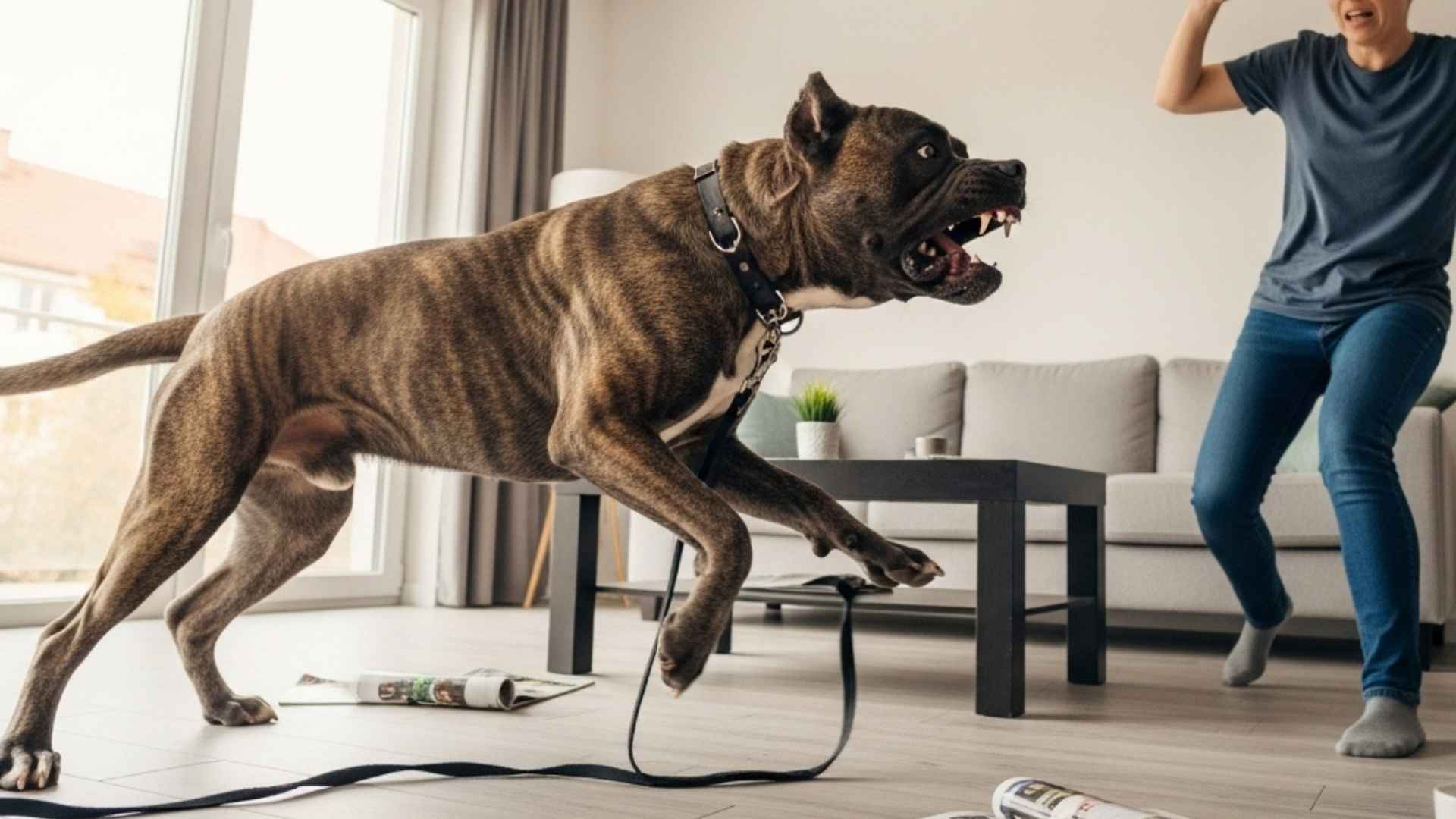Bringing a dog into your life is one of the most rewarding decisions you can make, offering years of love, loyalty, and companionship.
However, not all breeds are suited for every household. Some dogs are restricted or even banned in certain regions due to concerns about aggression, strength, or difficulty in handling. Understanding these risks is essential for making an informed decision about adoption.
Many of these breeds are deeply loyal and affectionate when placed in the right environment, but their physical power and strong protective instincts can sometimes pose challenges.
Without consistent training, socialization, and responsible ownership, they may become difficult to manage. For families with children, seniors, or limited space, these breeds may not be the ideal fit.
Statistics highlight the importance of caution. Research indicates that around 4.5 million dog bites occur annually in the United States. While all dogs descend from wolves and retain some predatory instincts, selective breeding has amplified certain traits.
As a result, some breeds are considered higher-risk, making it wise for potential owners to avoid them unless fully prepared for the responsibility.
Least Recommended Dog Breeds to Avoid
1. Cane Corso
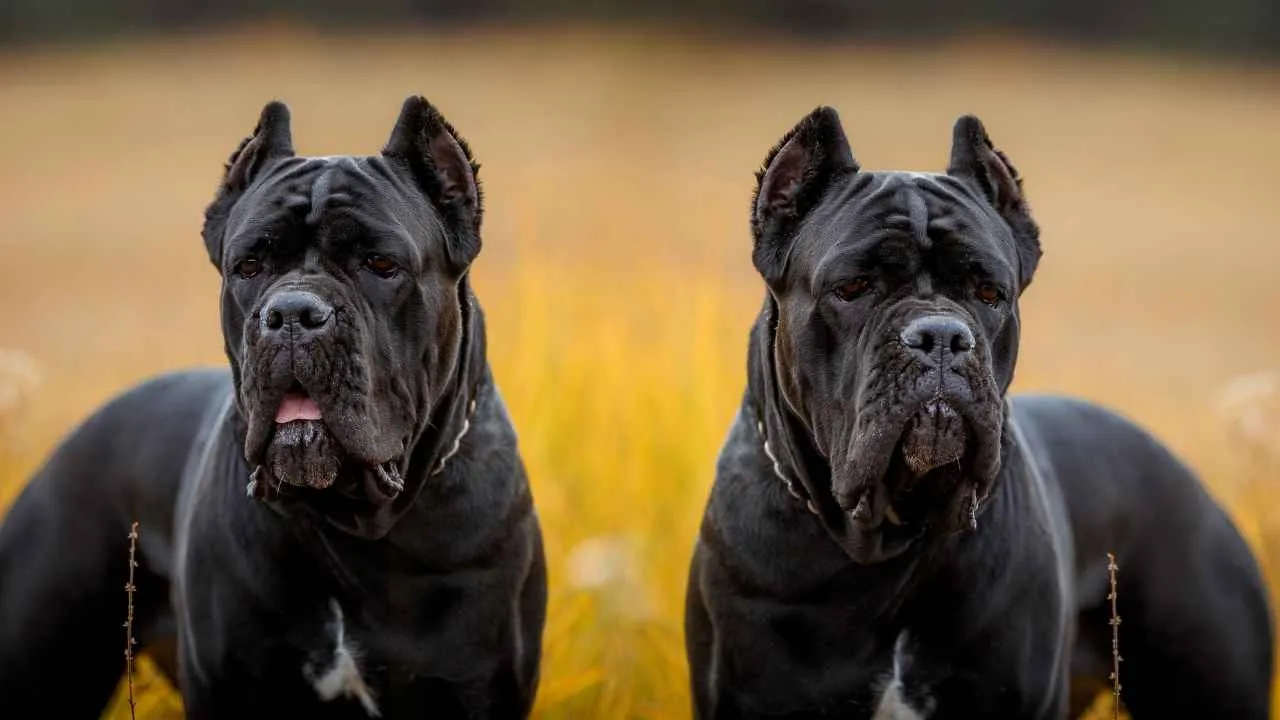
The Cane Corso, also known as the Italian Mastiff, is a massive guardian breed that traces its lineage back to ancient Roman war dogs. With a muscular frame, a broad skull, and an imposing stance, this dog was bred for protection and hunting large game.
Today, its reputation as a formidable guard dog has made it both admired and restricted in various regions. Despite their intelligence and trainability, Cane Corsos are not suited for small homes or apartments.
Their size alone—often exceeding 100 pounds—requires ample space to move comfortably.
Confined environments can lead to frustration, restlessness, and destructive behavior, particularly when there is a lack of daily physical and mental stimulation. Britannica says that because the breed can be wary of strangers, it is important to provide puppies with thorough socialization.
Another challenge is their strong guarding instinct. In small living spaces, they may become overly territorial or reactive toward strangers and other dogs, making them risky for inexperienced owners. Their keen prey drive also adds to the difficulties of managing them in confined and limited urban settings.
Because they require structured training, socialization, and ample room to roam, Cane Corsos thrive best in homes with confident owners and large, secure outdoor areas.
Fun Fact: The breed’s name translates from Latin as “bodyguard dog”, perfectly capturing its original purpose as a protector.
2. American Pit Bull Terrier
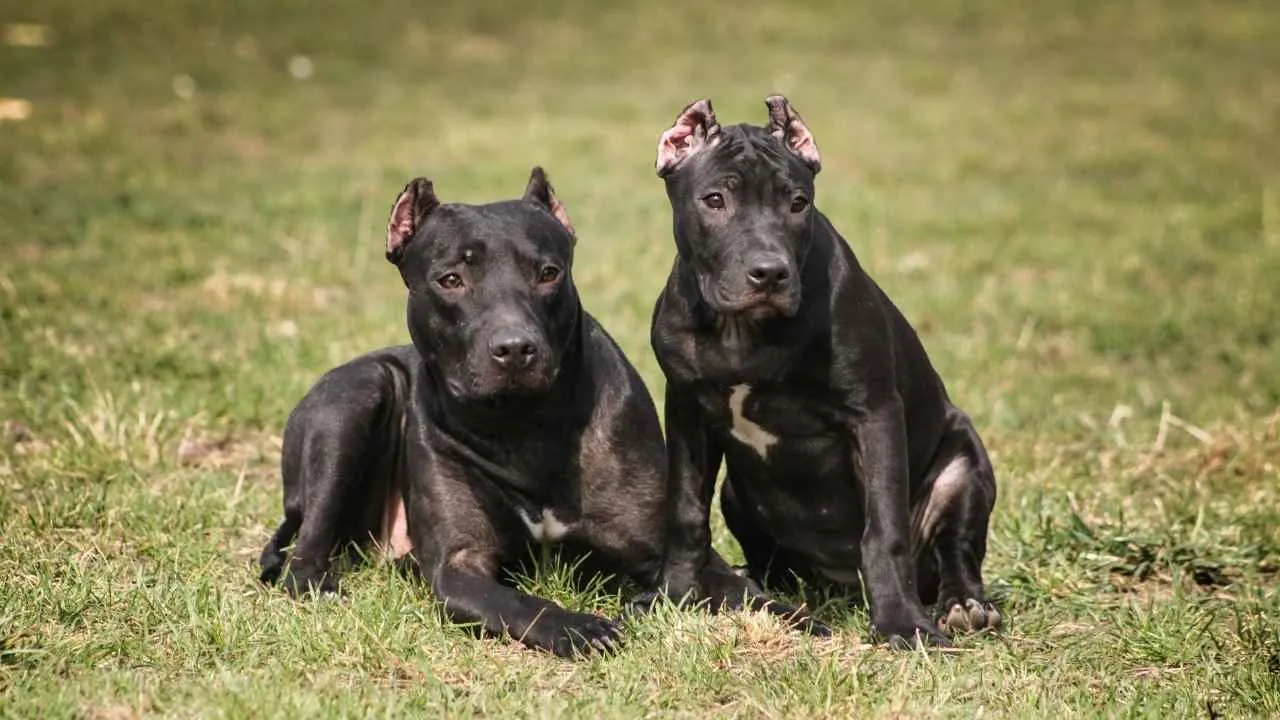
The American Pit Bull Terrier, also linked to breeds like the American Staffordshire Terrier and Staffordshire Bull Terrier, is a muscular, medium-sized dog with a powerful build and strong jaw.
Bred for bull-baiting and later dogfighting, this breed has developed traits of determination, agility, and resilience that can become difficult to manage without experienced ownership. PetMD says American Pit Bull Terriers are a breed with a debated history and reputation.
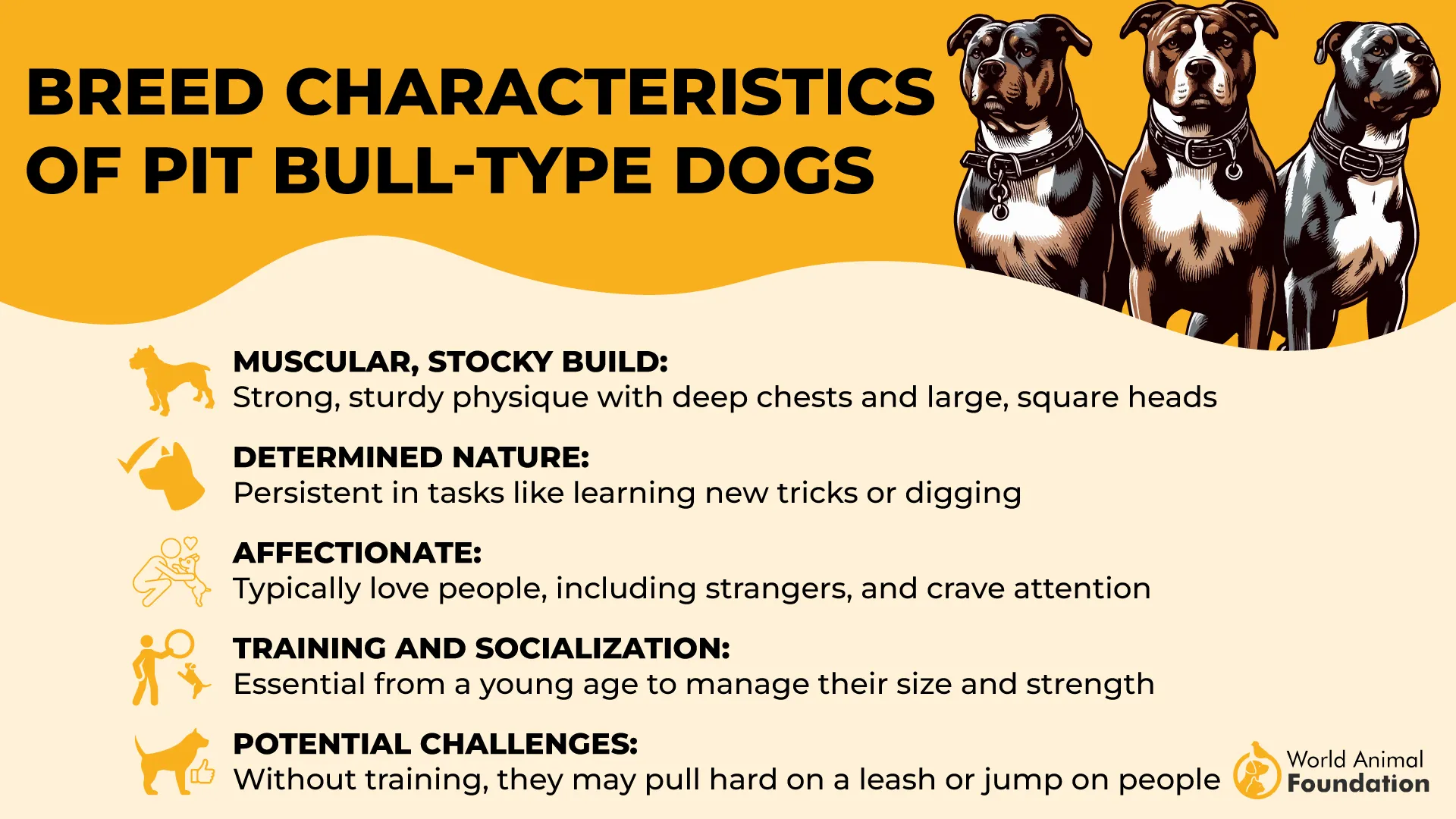
One of the challenges with this breed lies in its reputation. Pit Bulls are responsible for a disproportionately high number of serious bite incidents and fatalities compared to other breeds.
While misidentification often contributes to inflated numbers, the combination of strength and persistence makes them potentially dangerous in unprepared homes.
Their history also plays a role. Centuries of selective breeding for combat have shaped a strong prey drive and tenacity that, if unchecked, can turn into aggressive behaviors. This is why they are heavily restricted or banned in many regions around the world.
At the same time, stereotypes add to the difficulty of adoption. Many shelters struggle to find homes for Pit Bulls due to liability fears.
Fact: Research shows that Pit Bulls make up about 6% of the U.S. dog population, but are involved in around 68% of reported bite incidents since 1982.
3. Presa Canario
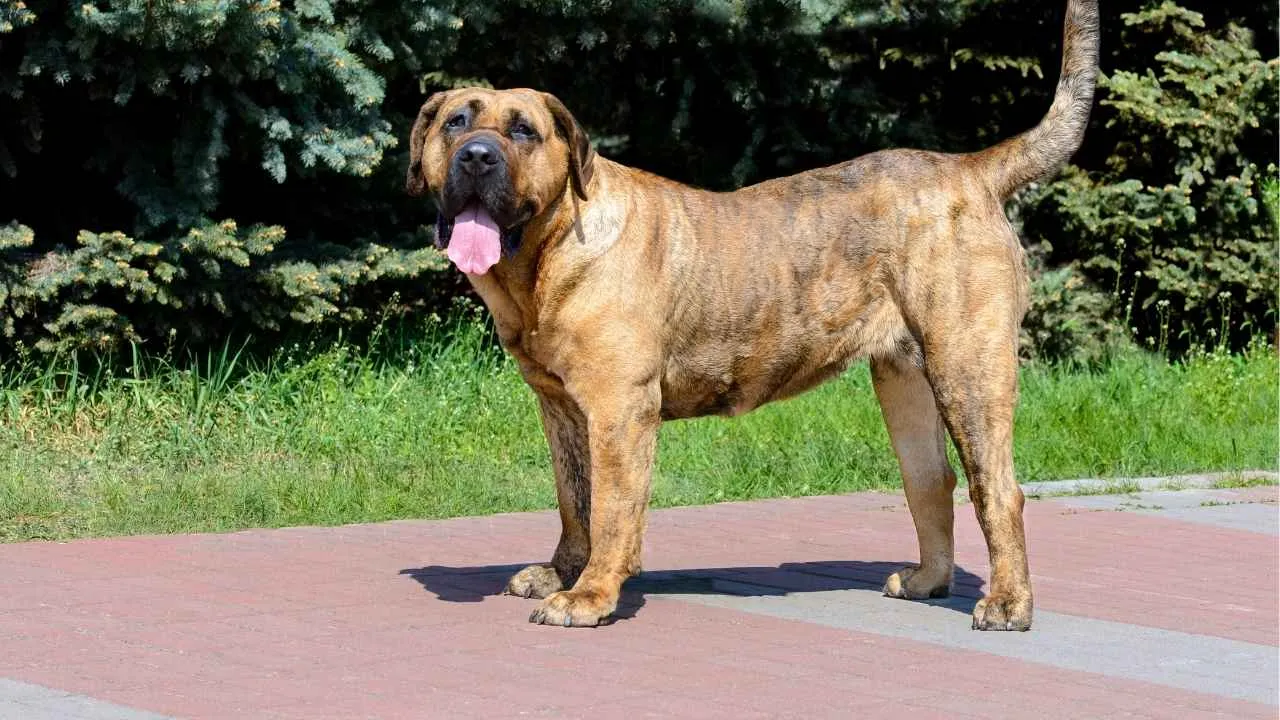
What makes the Presa Canario difficult for families is its dominant personality and strong territorial instincts. While they can be obedient and devoted to their master, they tend to view strangers with suspicion and are not naturally tolerant of unfamiliar people.
This protective drive, if unchecked, may create unsafe situations around guests or neighbors. AKC says the Presa Canario has a calm look and an attentive expression. The breed is especially suited for guarding and has traditionally been used for herding cattle.
Their sheer size and muscular power, combined with a powerful bite force, make them high-risk in inexperienced hands. Without consistent training and strong leadership, they can become uncontrollable, especially in stressful or unfamiliar situations.
Adding to the difficulty, Presa Canarios often struggle with other dogs due to their assertive nature. Their high prey drive also makes them unsuitable for households with smaller animals.
According to the Presa Canario Club of America, Presa Canarios tend to be cautious around strangers and form strong bonds with their families—traits that make them excellent livestock guardians.
Fact: Despite their intimidating presence, Presa Canarios are known to form strong, affectionate bonds with their families and may even enjoy snuggling when properly trained and socialized.
4. Dalmatian
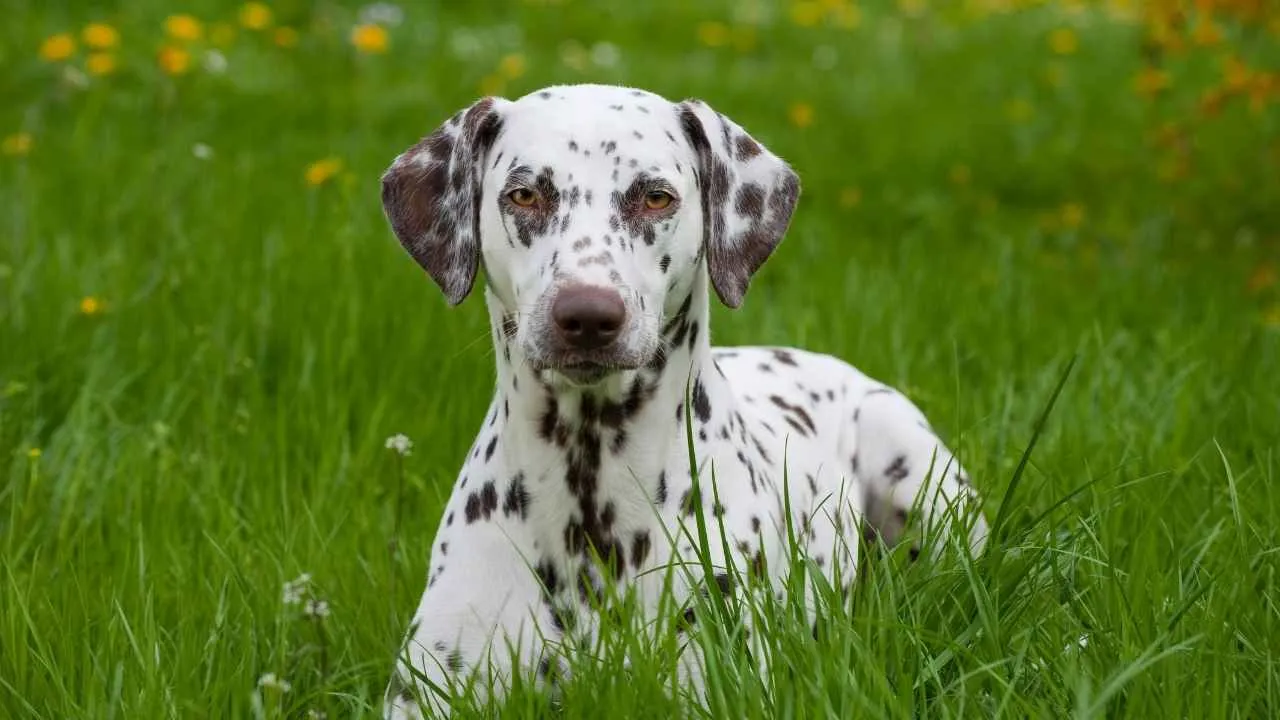
Also known as the “coach dog” or “carriage dog,” the Dalmatian is instantly recognizable by its black or liver-spotted coat.
Originally bred in Croatia’s Dalmatia region, this striking breed once trotted alongside horse-drawn carriages, serving both as a guard and a status symbol. Their lean, athletic bodies and graceful movement reveal their working heritage.
For families, however, Dalmatians can present challenges. They are extremely energetic, requiring long runs and constant mental stimulation. Without this, they become destructive, chewing furniture or digging relentlessly. First-time dog owners often find this high-maintenance lifestyle overwhelming.
Training a Dalmatian is rarely straightforward. Stubbornness, combined with a protective streak, can lead to aggressive or unpredictable behaviors, particularly around strangers. Seniors or novice handlers may find it difficult to control their strength and independence.
Another concern is their heavy shedding and health risks. Dalmatians shed year-round, creating extra upkeep for busy owners. More importantly, research shows that up to 30% of the breed suffers from hereditary deafness, around 5% in both ears, which complicates training and socialization.
5. Alaskan Malamute
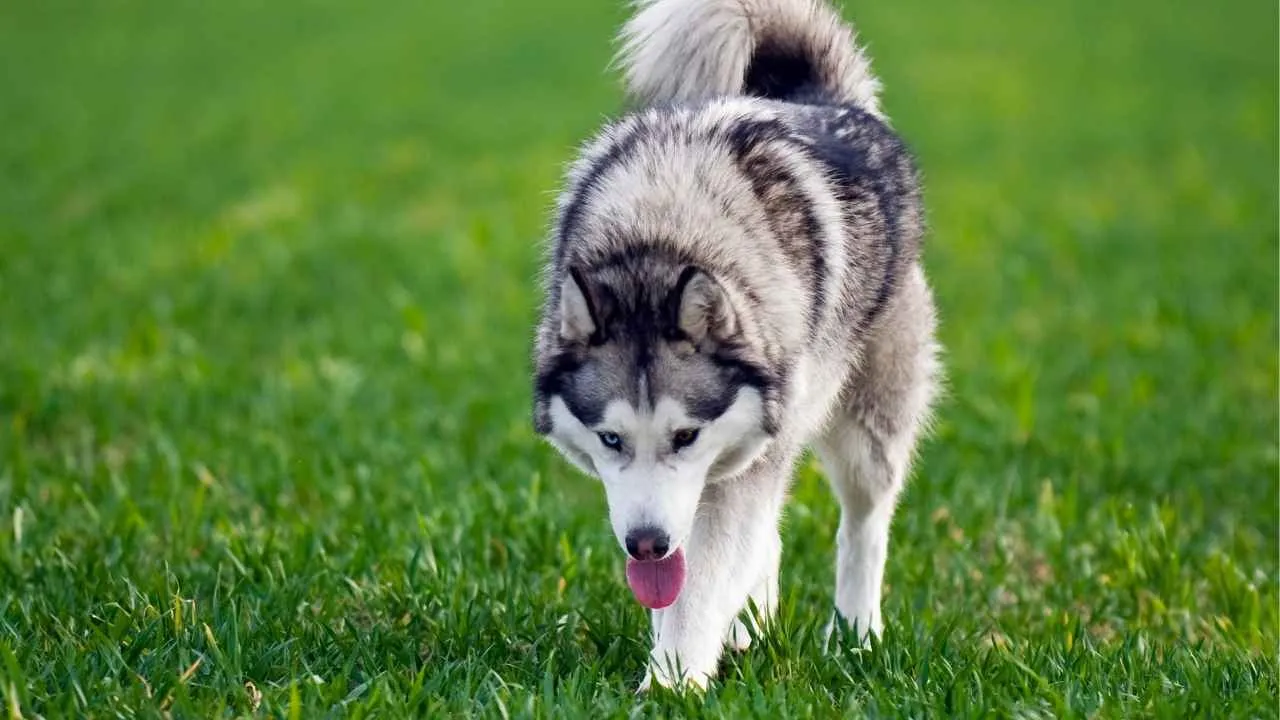
The Alaskan Malamute, sometimes called the “Mal” or simply the Malamute, is a powerful Spitz-type dog originally bred for hauling sleds and surviving the harsh Arctic. With a dense double coat, muscular build, and a striking resemblance to the Husky, they are admired for their beauty and endurance.
For families, however, these dogs pose challenges that make them a less-than-ideal choice. Their stubborn independence and immense energy require constant training and exercise. Without strong leadership, they may develop destructive habits and show aggression toward other animals, especially smaller pets.
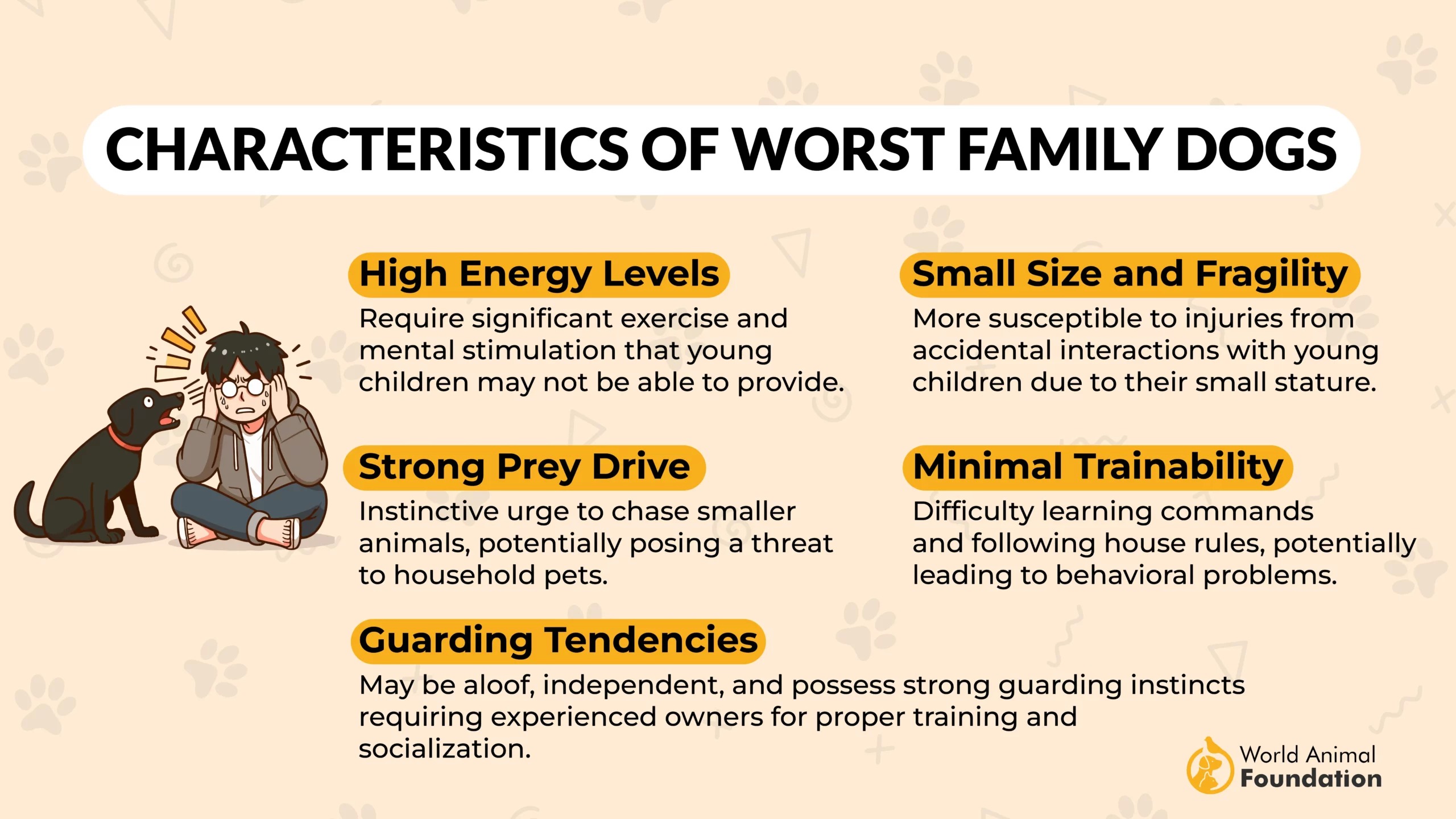
Their sheer size, combined with an unruly streak, can be overwhelming for novice owners. Alaskan Malamutes also tend to pull on leashes, making walks unsafe for children and inexperienced handlers.
Additionally, they are high-maintenance dogs with demanding grooming needs. Their thick coat sheds heavily year-round, requiring rigorous brushing, particularly in shedding seasons.
6. Akita
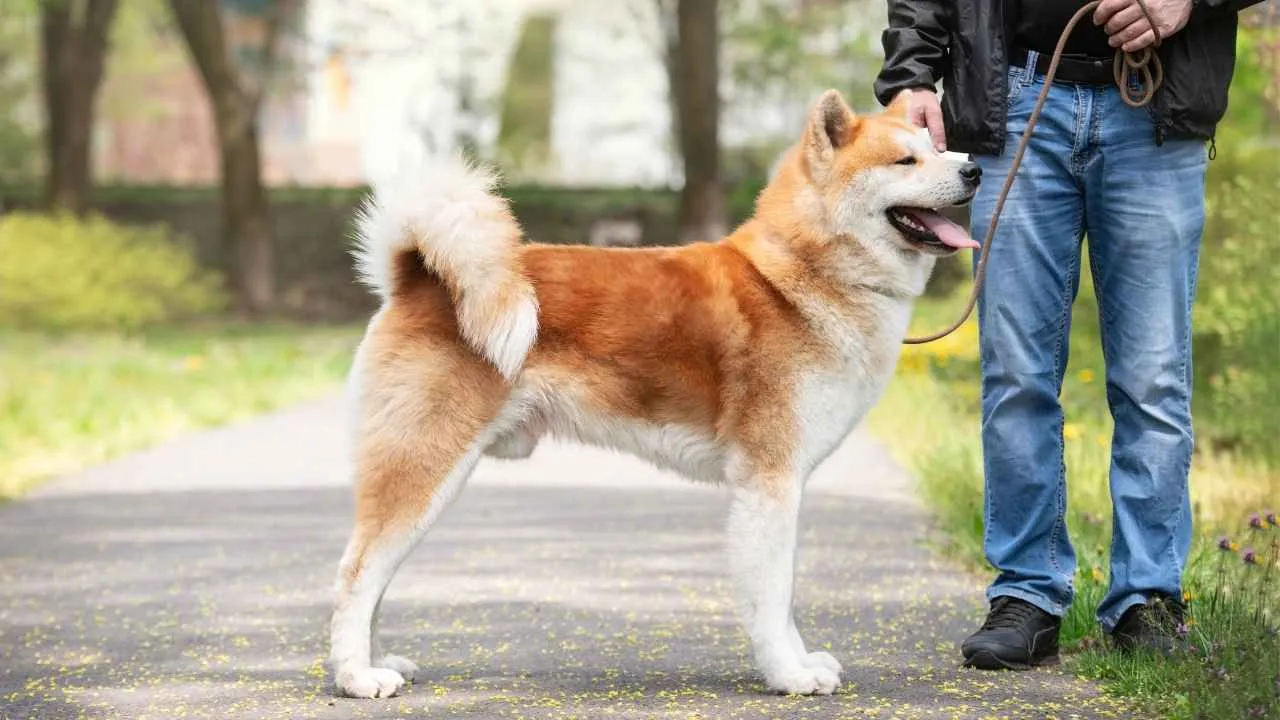
The Akita, also called the Japanese Akita or Akita Inu, is a large, powerful Spitz-type breed originating in Japan. Recognized for its broad head, curled tail, and dense double coat, the Akita has long been revered as a symbol of loyalty, courage, and good fortune in its homeland.
Despite its dignified presence, this breed poses challenges for inexperienced owners. Their independence also makes them harder to train compared to more people-pleasing breeds.
What makes Akitas difficult for families is their strong prey drive and territorial instincts. Bred historically as guardians and big-game hunters, they can be aggressive toward other dogs and often struggle to coexist peacefully with smaller pets.
Aggression is not always directed at strangers alone. Without early socialization, these hunting dogs can become overly protective of their families, making them unpredictable in certain situations. Their quiet nature adds to the concern—they rarely give warning before acting on instinct.
These traits, coupled with their immense strength, mean Akitas can pose a danger if not carefully managed.
Fact: The breed’s scissor-shaped jaw delivers an exceptionally powerful bite that is nearly impossible to pry open once latched, contributing to its reputation as high-risk.
7. Anatolian Shepherd Dog
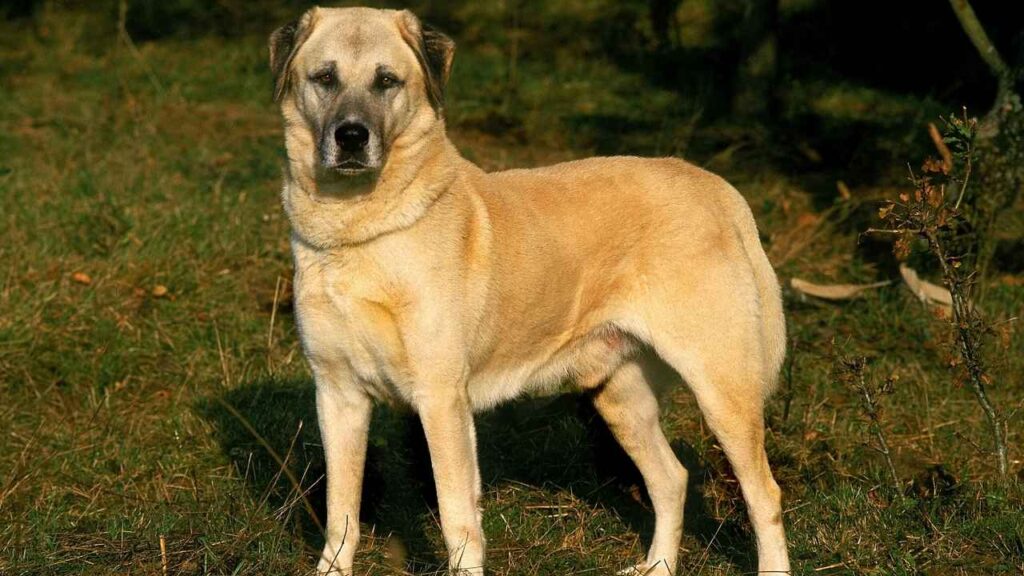
The Anatolian Shepherd Dog, also called the Anatolian Karabash, is a formidable breed with deep roots in Turkey. Originally bred as a flock guardian, it boasts a thick double coat for weather resistance and a muscular frame capable of facing predators.
Despite their calm and intelligent demeanor, their protective instincts can become overwhelming in a family setting. These dogs are fiercely territorial, often perceiving strangers—or even visiting friends—as threats.
Their independence and aloof nature make them less adaptable to busy households, especially those with young children or frequent guests.
Their training requirements are far from simple. Anatolian Shepherds demand firm, consistent leadership from an experienced owner. Without early and structured socialization, they may become dominant and difficult to manage.
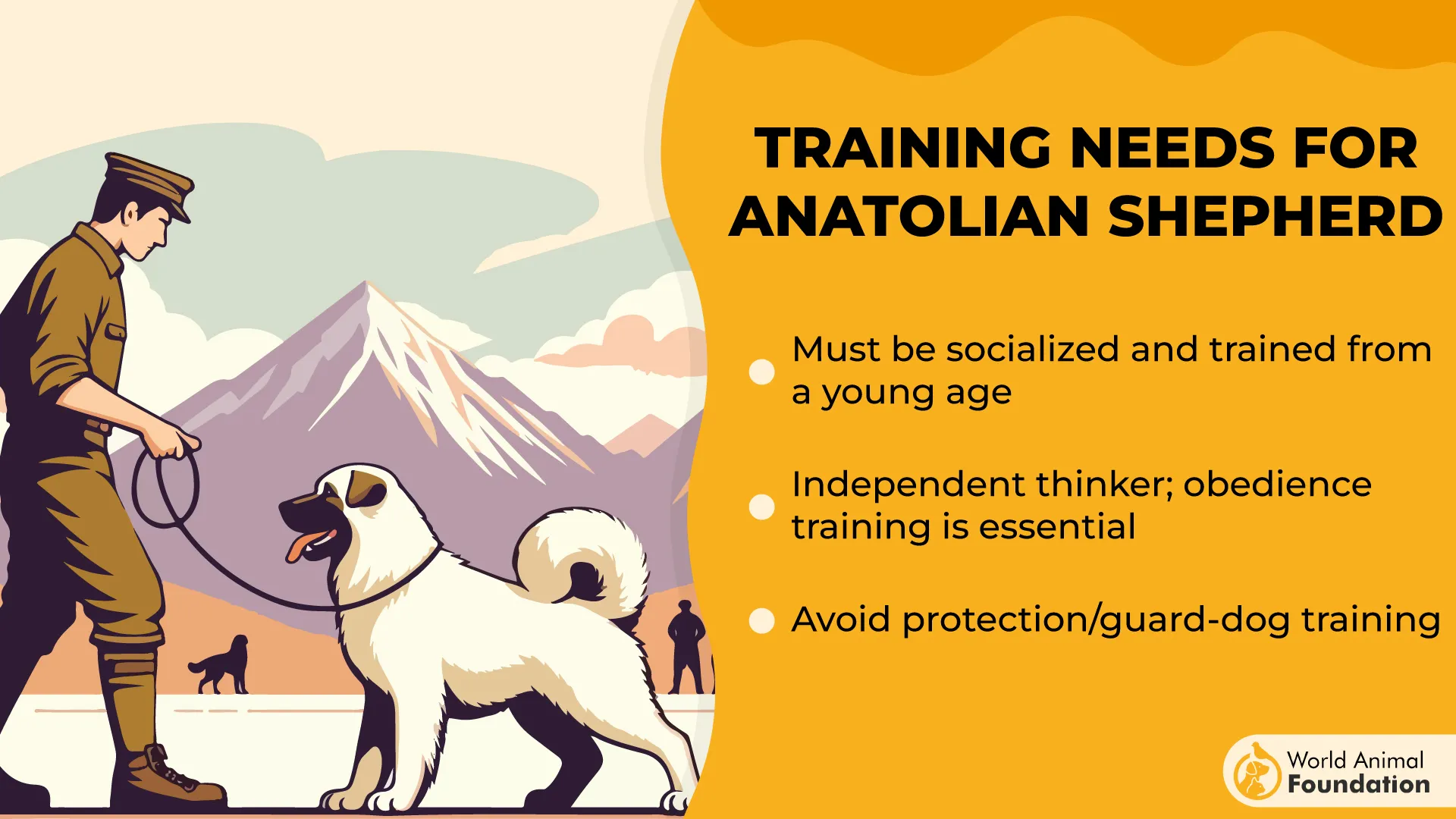
Their size and power make any lapse in obedience training a serious risk, particularly when dealing with other dogs or animals.
A major concern is their extraordinary bite force—measured at 743 PSI—one of the highest among domestic breeds. While loyal and devoted to their families, their sheer strength, paired with an instinctive guarding drive, makes them a challenging choice.
The breed’s history as a rugged guardian of flocks highlights why they remain best suited to working roles, rather than as household companions.
8. Rottweiler
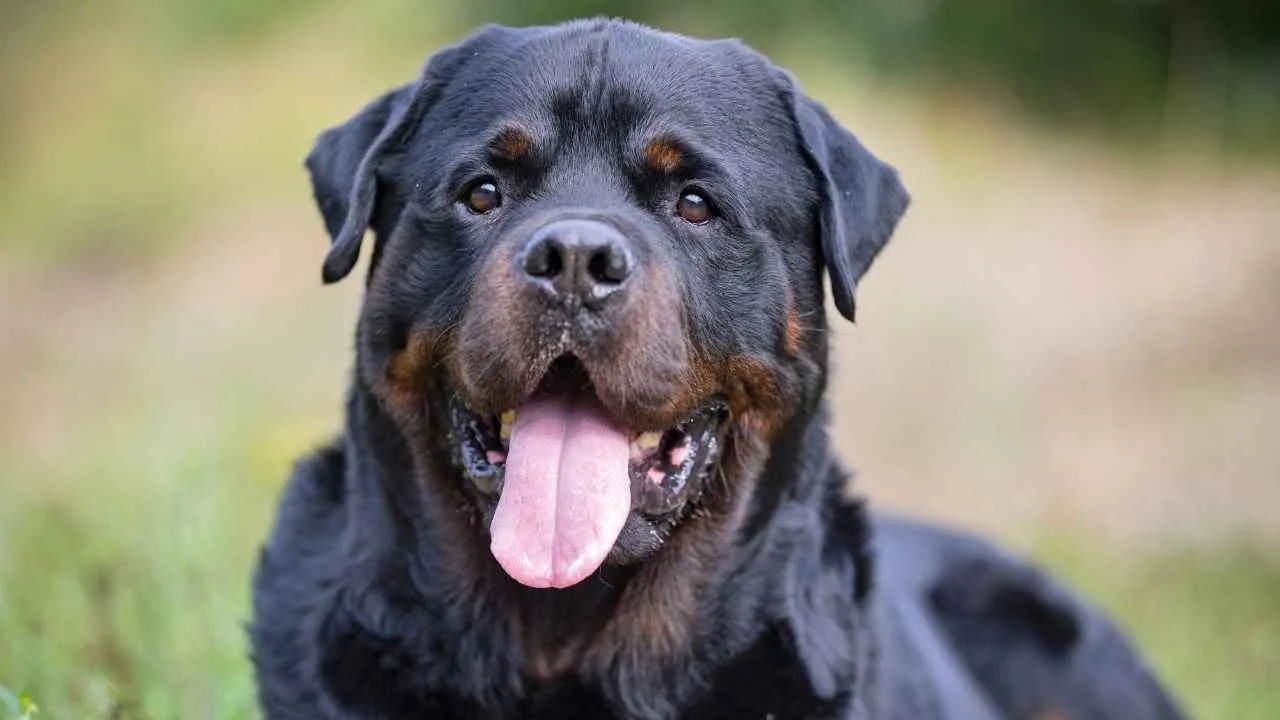
Also known simply as the “Rottie,” the Rottweiler is a powerful working breed with origins tracing back to Roman drover dogs.
Over time, they became known for their striking black coats with tan or rust markings, broad mastiff-like skulls, and muscular builds. Loyal and confident, they often act as devoted guardians for their families.
Despite their intelligence and affectionate nature, Rottweilers pose challenges for many households. Originally bred to herd cattle and protect property, they have strong territorial instincts that can easily escalate into aggression if not carefully managed.
Their protective drive makes them particularly reactive to fast movements or loud noises, which means children running or playing nearby may be perceived as threats
Rottweilers also demand rigorous training and consistent socialization from an early age. Without these, they are prone to dominance issues and destructive behaviors, fueled by their high energy and need for mental stimulation.
Seniors or first-time dog pet parents often find the breed overwhelming, as they require both firm leadership and significant daily exercise.
9. Chihuahua
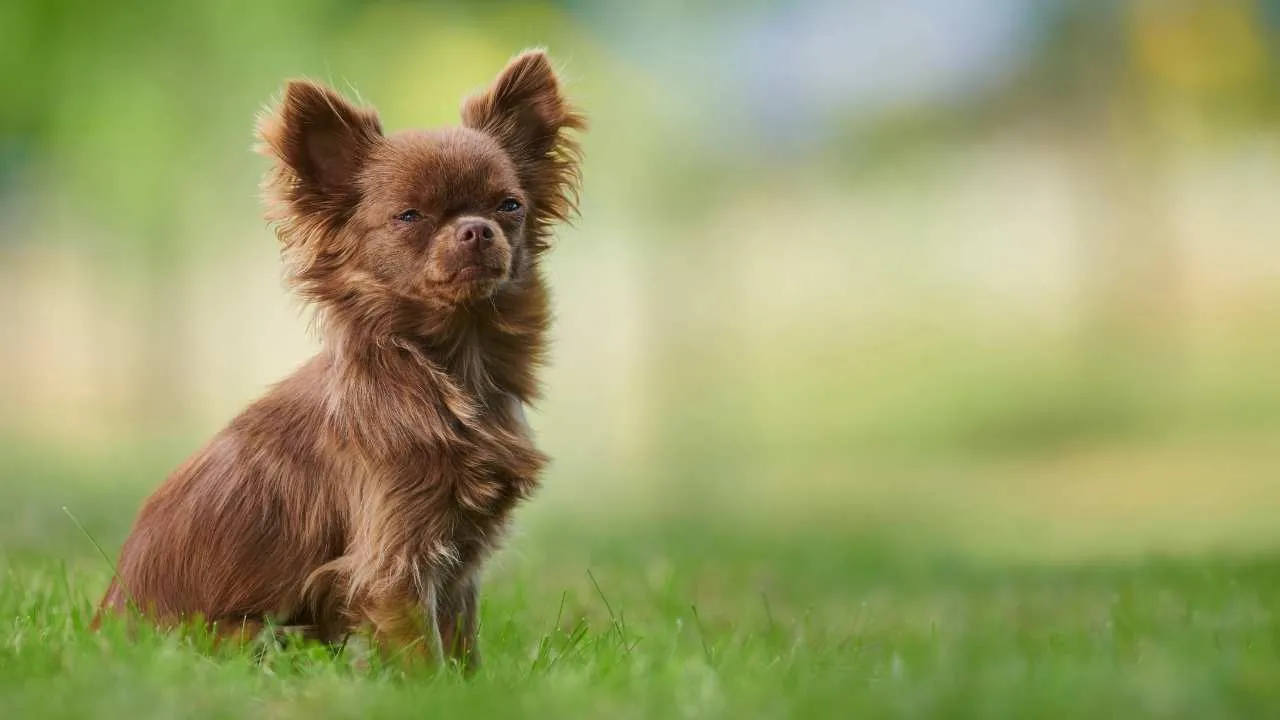
The Chihuahua, often called the “purse dog,” is the smallest recognized dog breed, weighing no more than 6 pounds. With its expressive apple-shaped head, large eyes, and alert ears, it is a national symbol of Mexico and one of the oldest breeds in the Americas, tracing back to pre-Columbian civilizations.
Despite their size, Chihuahuas can be surprisingly challenging for families. Their tiny frames make them too delicate for rough play, and they can be overly spunky and stubborn.
Many struggle with house training, often requiring indoor options like litter boxes. This tendency, combined with a loud bark, can overwhelm households not prepared for constant management.
Health concerns add to the difficulty. Chihuahuas are prone to knee issues, spinal injuries, heart disease, dental problems, and even hydrocephalus. These conditions require ongoing veterinary care and vigilance, making them less practical for busy families or elderly owners.
While affectionate, their fiery temperaments can lead to nipping, especially when mishandled by children.
Fact: Research shows that while both large and small dogs share genetic roots for boldness, only smaller breeds carry the markers linked to excitability.
Conclusion
Choosing the right dog requires more than falling for a cute face—it means understanding breed characteristics and matching them to your lifestyle.
Some of the worst dog breeds for inexperienced owners, such as the Belgian Malinois, Australian Shepherd, or Siberian Husky, are highly energetic dogs that demand constant activity, structure, and proper training.
These large dogs and working breeds often become extremely difficult when owners underestimate just how much mental and physical stimulation dogs require. Even breeds seen as family favorites, like the Cocker Spaniel or Labrador Retriever, may pose challenges if their exercise and social needs aren’t met.
With so many dogs available, making the best choice can feel overwhelming. Relying on reputable breeders or adoption centers ensures healthier pets and reduces risks tied to poor practices in breeding dogs.
While most dogs can be wonderful companions with time and patience, certain breeds are simply not ideal for new owners. Knowing which ones to avoid helps you save time, stress, and the need for constant dog sit arrangements.
The right preparation will lead to a balanced partnership and fewer regrets down the road.


